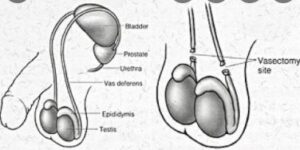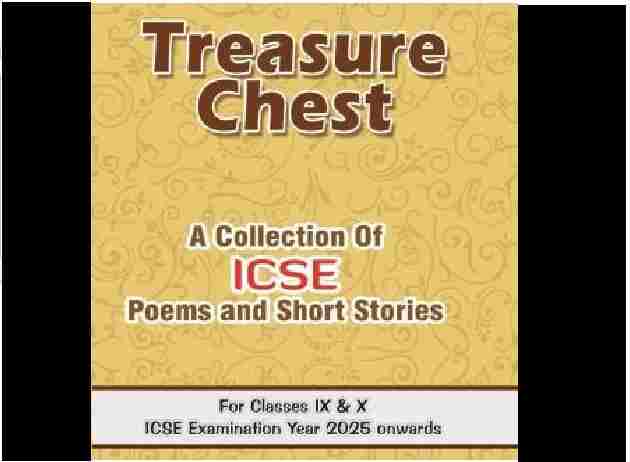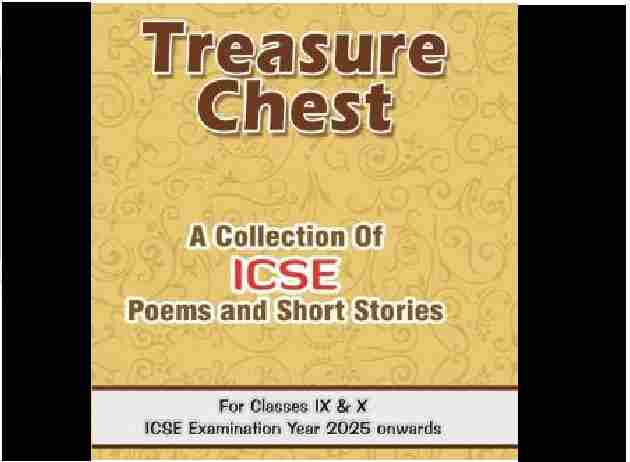Citric acid is the most important organic acid produced in tonnage and is extensively used in food and pharmaceutical industries. It is produced mainly by submerged fermentation using Aspergillus niger or Candida sp. from different sources of carbohydrates, such as molasses and starch based media
Answer
Correct option is (c) Blood cholesterol lowering agents
Question 18
Biological name of the common yeast used in baking industry is:
(a) Saccharomyces cerevisiae
(b) Clostridium butylicum
(c) Trichoderma polysporum
(d) Propionibacterium shermanii
Answer
Correct option is (a) Saccharomyces cerevisiae
Explanation
Baker’s yeast is the common name for the strains of yeast commonly used in baking bread and other bakery products, serving as a leavening agent which causes the bread to rise (expand and become lighter and softer) by converting the fermentable sugars present in the dough into carbon dioxide and ethanol. Baker’s yeast is of the species Saccharomyces cerevisiae, and is the same species (but a different strain) as the kind commonly used in alcoholic fermentation, which is called brewer’s yeast. Baker’s yeast is also a single-cell microorganism found on and around the human body.
Question 19
Which of the following microbes is used in the production of Swiss cheese?
(a) Aspergillus niger
(b) Mucor
(c) Monascus purpureus
(d) Penicillium notatum
Answer
Correct option is ……………….
Explanation
Swiss cheese is formed by the bacterium Propionibacterium sharmanii.
Question 20
Which of the following can be used as biofertilizer?
(a) Anabaena
(b) Nostoc
(c) Oscillatoria
(d) All the above
Answer
Correct option is .(d) All the above.
Explanation
Blue-Green Algae are a type of photosynthetic bacteria consisting either of single cells or colonies which is also known as the Cyanobacteria. Cyanobacteria contain only one type of chlorophyll, Chlorophyll a, a green pigment. In addition, they also contain pigments such as carotenoids, phycobilin.
Examples of cyanobacteria: Nostoc, Oscillatoria, Spirulina, Microcystis, Anabaena.
Question 21
The abbreviation ‘HIV’ stands for:
(a) Human immune virus
(b) Hepatitis virus
(c) Human Immuno deficiency virus
(d) Highly infectious virus
Answer
Correct option is .(c) Human Immuno deficiency virus
Question 22
The abbreviation snRNA stands for:
(a) Small nuclear RNA
(b) Small nucleus and RNA
(c) Small nucleolar RNA
(d) Sub-nuclear RNA
Answer
Correct option is (a) Small nuclear RNA
Question 23
The fact that DNA is the genetic material was proved by:
(a) Meselson and Stahl
(b) Sutton and Boveri
(c) Watson and Crick
(d) Hershey and Chase
Answer
Correct option is (d) Hershey and Chase
Question 24
The term biodiversity was coined by:
(a) Wilson
(b) R Mishra
(c) Rio de Janeiro
(d) Oparin
Answer
Correct option is ……………
Explanation
The term biodiversity was coined by Walter G. Rosen in the year 1986.
Question 25
Bt cotton is a/an ______ resistant variety of cotton.
(a) Insecticide
(b) Pest
(c) Insect
(d) Disease
Answer
Correct option is (b) Pest
Explanation
Question 26
Bt cotton has been produced by transferring genes of _____ into the cotton plant.
(a) Escherichia coli
(b) Pseudomonas putida
(c) Bacillus tumorigenes
(d) Bacillus thuringiensis
Answer
Correct option is (d) Bacillus thuringiensis
Explanation
Bt cotton has been genetically modified by the insertion of one or more genes from a common soil bacterium, Bacillus thuringiensis. These genes encode for the production of insecticidal proteins, and thus, genetically transformed plants produce one or more toxins as they grow
Question 27
The enzyme pectinase is obtained from:
(a) Bacillus aureus
(b) Bacillus cereus
(c) Trichoderma
(d) Claviceps
Answer
Correct option is……….
Explanation
Pectinases can be extracted from fungi such as Aspergillus niger. The fungus produces these enzymes to break down the middle lamella in plants so that it can extract nutrients from the plant tissues and insert fungal hyphae.
Question 28
The enzyme ___ is used to remove the turbidity and clear the fruit juices:
(a) Zymase
(b) Pectinase
(c) Amylase
(d) Papain
Answer
Correct option is.(b) Pectinase
Explanation
In industrial fruit juice processing, pectinolytic enzymes are used to remove such turbidity . Enzymes in this group that act on plant polysaccharides cause the aggregation of cloud particles and the clarification of fruit juices.
Question 29
Secondary sewage treatment is mainly a ___ process:
(a) Chemical
(b) biological
(c) mechanical
(d) physical
Answer
Correct option is.(b) biological
Explanation
Secondary wastewater treatment processes use microorganisms to biologically remove contaminants from wastewater. Secondary biological processes can be aerobic or anaerobic, each process utilizing a different type of bacterial community. Coupled anaerobic–aerobic processes may also be employed under certain circumstances
Question 30
Corpus luteum has ____ function:
(a) Reproductive
(b) Endocrine
(c) Excretory
(d) All the above
Answer
Correct option is.(b) Endocrine
Explanation
The corpus luteum (CL) is a dynamic endocrine gland within the ovary that plays an integral role in regulation of the menstrual cycle and early pregnancy. The CL forms from cells of the ovarian follicle wall during ovulation. The precise origin of the cells that comprise the CL remains controversial
Question 31
The hormone _(A)__, released by __(B)__ helps in the release of milk from the mammary
glands
(a) Oxytocin, placenta
(b) Prolactin, posterior pituitary
(c) Prolactin, ovary
(d) Oxytocin, posterior pituitary
Answer
Correct option is.(b) Prolactin, posterior pituitary
Explanation
Prolactin (PRL) released from lactotrophs of the anterior pituitary gland in response to the suckling by the offspring is the major hormonal signal responsible for stimulation of milk synthesis in the mammary glands
Question 32
If the mother is homozygous for blood group B, and the father is heterozygous for blood group A, their offspring will be of ___ and ___ blood groups:
(a) A, B
(b) O, B
(c) B, AB
(d) A, AB
Answer
Correct option is.(c) B, AB
Explanation
if father is heterozygous (IA IO”) and mother is homozygous (IB IB); the total different types of possible combinations by three alleles (IA, IB and IO) will be (IA IB and IBIO). But if mother is heterozygous (IB IO) and father is homozygous (IA IA); the total different types of possible combinations by three alleles (IA, IB and IO) will be (IA IB and IBIO).
Question 33
The vermiform appendix is ____ organ in humans.
(a) A homologous
(b) An analogous
(c) A vestigial
(d) An over-specialised
Answer
Correct option is. (c) A vestigial
Explanation
Question 34
The sperm of Drosophila contains _____ number of chromosomes:
(a) 4
(b) 46
(c) 23
(d) 8
Answer
Correct option is. (a) 4
Explanation
In Drosophila melanogaster there are 4 homologous pairs of chromosomes: 2 pairs of large autosomes, ( one slightly smaller than the other pair), 1 pair of very small autosomes, and a pair of sex chromosomes ( X, Y ).
Question 35
Which of the following is not correct regarding vasectomy?
(a) It is irreversible
(b) It causes loss of secondary sexual characters in males
(c) It leads to absence of sperm in the semen
(d) This process involves bilateral cutting and ligating of the sperm ducts
Answer
Correct option is. (d) This process involves bilateral cutting and ligating of the sperm ducts
Explanation

Question 36.
Which of the following statements is correct?
(a) Down’s syndrome is caused due to trisomy of 22nd chromosome
(b) Haemophilia is an autosomal recessive disorder
(c) The life on the Earth appeared about 3.5 million years ago
(d) In angiosperms, the endosperm is triploid
Answer
Correct option is. (d) In angiosperms, the endosperm is triploid
Explanation
Most angiosperms have a Polygonum-type embryo sac with two polar nuclei and produce a triploid (3n) endosperm as in Arabidopsis. In a few species, more than two polar nuclei are present in the central cell leading to the formation of endosperm with a ploidy higher than 3n
Question 37
Identify the correct match from the columns and mark the correct option:
……………
(a) A-q-iv, B-p-iii, C-r-ii, D-s-i
(b) A-s-iv, B-p-iii, C-q-ii, D-r-i
(c) A-q-i, B-r-ii, C-s-iii, D-p-iv
(d) A-q-iv, B-r-ii, C-p-i, D-s-iii
Answer
Correct option is. ……
Explanation
Question 38
Match Column – I with Column – II and select the correct option from the choices given below:
………………….
Matching codes:
(a) A-3, B-1, C-2, D-4
(b) A-1, B-4, C-3, D-2
(c) A-2, B-1, C-4, D-43
(d) A-4, B-3, C-2, D-1
Answer
Correct option is. ……
Explanation
Question 39
Which of the following is odd one out with reference to evolution?
(a) Flippers of whale
(b) Wings of pigeon
(c) Forelimbs of rabbit
(d) Wings of butterfly
Answer
Correct option is.(d) Wings of butterfly
Explanation
Wings of butterfly is not originate from pectoral girdle as a) Flippers of whale (b) Wings of pigeon and (c) Forelimbs of rabbit so they are common
Question 40
Which of the following is odd one out with reference to geological time scale?
(a) Proterozoic
(b) Mesozoic
(c) Jurassic
(d) Coenozoic
Answer
Correct option is.(c) Jurassic
Explanation
other than Jurassic rest are geological ERA
Question 41 to 50 available soon
Also visit
Thanks
Please share with your ISC friends if it is helpful




Hello,it is very helpful.
But , when will you post Q.41 to q.50
Today is our biology exam at 2: 00 a.m. What will we do afterwards??????
please focus on sem-2